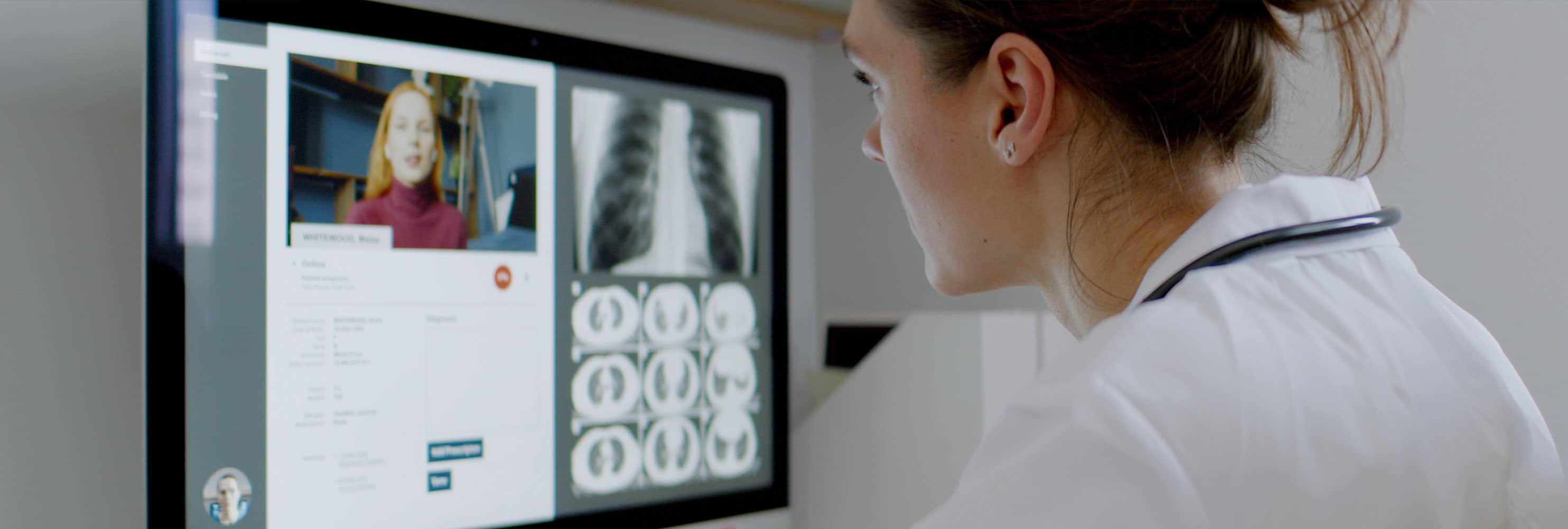
Why Practices Should Still Utilize Telehealth Amid COVID-19
COVID-19 prompted a widespread adoption of telehealth solutions across the country. Pro...
April 6, 2020
As the Coronavirus global pandemic continues to unfold before us, more and more providers are quickly implementing digital solutions to help patients during this time. Legislation has changed, making it simpler for providers to offer telehealth throughout the pandemic and it is making a difference.
As we try to slow down the progression of this disease, the coronavirus has changed the way we are accessing care. Digital solutions like telehealth are helping patients stay home, avoiding the chance that they might spread or come into contact with the disease. While telehealth continues to be a vital tool during this time, it will continue to be in the future once the pandemic has run its course.
Telehealth is Helps Providers Pre-screen Patients for the Coronavirus:
1) Screen Symptoms
Instead of immediately going to a doctor’s office or Emergency Department (ED) to seek treatment for one’s symptoms, patients are advised to “call-ahead.” Patients who are experiencing symptoms related to COVID-19 should first call their providers, who can then screen their symptoms. If patients are exhibiting any symptoms related to the virus, providers can then set up a telehealth visit with the patient.
Telehealth makes it possible for providers to effectively offer care to patients during this time without forcing them to come into the office. This is extremely valuable during the COVID-19 outbreak. The more patients a provider can screen and treat via telehealth, the less chance there is of it spreading to other patients.
2) Form Treatment Plan
After the provider screens their patients and determines whether or not they could potentially have the virus, they can then form their treatment plan. With the right technology, providers can access a patient’s chart and make clinical decisions, just as they would in person.
Using telehealth, providers can inform their patients if they should do next such as seek further medical attention or stay home.
Protecting Vulnerable Populations
Certain populations are more vulnerable and susceptible to the coronavirus and need to take every precaution to stay safe. These patients include those over the age of 65 ad those whose immune system might be compromised due to an existing condition or chronic illness. Should these patients come into contact with the disease, they have the most to lose. The problem is, these individuals are the people who seek medical attention the most regularly.
Telehealth offers a solution for keeping vulnerable populations safe during the coronavirus. Through video visits and remote patient monitoring, patients can continue to visit with their physicians and get the care they need while remaining safely at home.
What Does This Mean for the Future?
Even when the pandemic is over, telehealth is not going anywhere. What does the quick implementation of telehealth mean for the future of care delivery?
1) Increased Use of Digital Care
Telehealth, while relatively new, has been in use to some degree for several years. Prior to the coronavirus outbreak, many providers had yet to implement it and many patients had yet to engage in digital visits. Once the pandemic has run its course, this tool will continue to offer life-saving, cost-effective, and time-efficient care to patients everywhere.
Remote patient care tools can help providers track health data collected in the patient’s home that is then uploaded directly into their chart. This includes data such as vitals, blood sugar, heart rate, and more.
Due to the increased use of telehealth at the moment, it is believed that patients will continue to use it as a more convenient visit alternative and care delivery option in the future.
2) Prescreen for Other Diseases
Just as providers are prescreening for the coronavirus using telehealth, they can continue to use it to prescreen for other diseases. Diseases that are highly contagious, like the flu, are often spread all over a provider’s office when a patient comes in for testing and treatment. Telehealth can continue to operate at a safe alternative to in-person visits, preventing the spread of future viruses and diseases.
To learn more about how your practice can implement telehealth, click here.